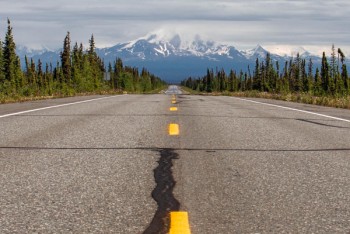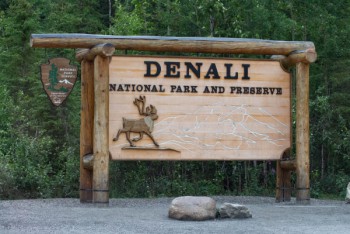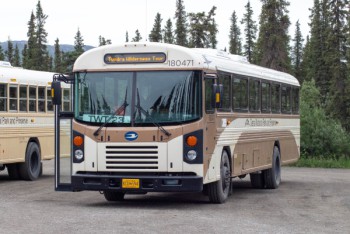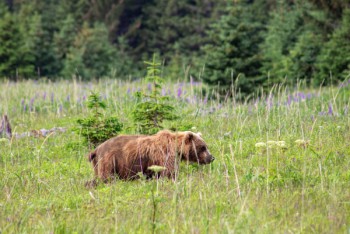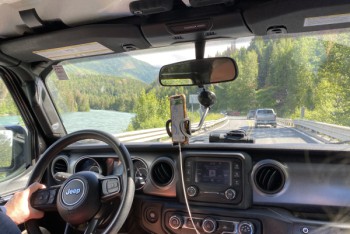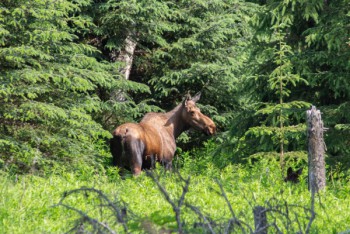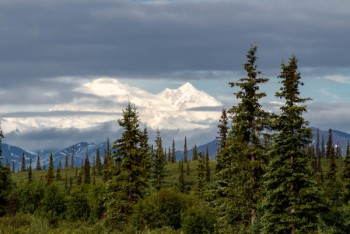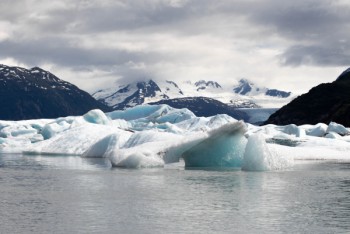HomeBlogsExample ItinerariesCombine Canada and Alaska
Combine Canada and Alaska
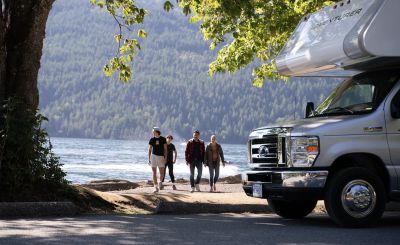
An RV trip through Canada and Alaska is the perfect opportunity to spot wildlife from your RV and enjoy outdoor activities in nature. This journey starts and ends in Whitehorse (Yukon, Canada) and takes you through stunning mountain landscapes, past glaciers, lakes, and forests. Along the way, you’ll experience the untouched wilderness of Canada and Alaska, with plenty of chances to spot animals and explore national parks. RV rentals are available through our trusted partners Fraserway and Canadream.
.png)
Day 1 – Arrival in Whitehorse, Canada
After a long flight, you arrive in Whitehorse. Canadian regulations require you to spend the first night in a hotel or other accommodation before picking up your RV. Fortunately, there’s plenty to do in Whitehorse. Start at the visitor center to get information on local highlights and things to do in Whitehorse and the Yukon. Our top picks? Miles Canyon, the Yukon Wildlife Preserve, or a walk along the Yukon River. For history buffs, check out the MacBride Museum.
Overnight: hotel or lodge in Whitehorse.
Day 2 & 3 – Whitehorse ➝ Kluane National Park (155 km)
After a restful night, your RV adventure begins as you head to Kluane National Park. Stop at Pine Lake for a perfect first lunch break in nature. In the park, the Dezadeash River Trail is a great option: an easy 3.5 km hike through marshes, forests, and rivers. The well-marked trail offers beautiful views of the snow-capped mountains.
Campground: Kathleen Lake Campground.
Day 4 – Kluane National Park ➝ Tok (470 km)
Drive the Alaska Highway across the border into the United States. Note: Canadream charges a cross-border fee. Stop at Beaver Creek in Yukon for a scenic view of the Wrangell Mountains. At the Alaska border, you’ll need your passport, a valid ESTA, and must fill out the I-94 form. Be sure to carry your rental agreement showing that cross-border travel is permitted. Tok is the first major town in Alaska, surrounded by beautiful lakes and mountains.
Campground: Alaskan Stoves Campground.
Day 5 – Tok ➝ Fairbanks (330 km)
Today you drive north to Fairbanks, one of the best places to see the Northern Lights between September and May. Short flights to the Arctic Circle also depart from here. Stop at Delta Junction (end of the Alaska Highway) to refuel and stock up on supplies.
Campground: River’s Edge RV Park or Tanana Valley Campground.
Day 6 & 7 – Fairbanks ➝ Denali National Park (200 km)
Before leaving Fairbanks, be sure to fill up your gas tank, as fuel stations are limited between here and Denali. Drive the George Parks Highway toward Denali National Park, Alaska’s most popular park—and for good reason. Known for its abundant wildlife and Mount Denali (North America’s highest peak), the park is mostly closed to private vehicles. RVs are only allowed partway in, but guided bus tours offer great views and expert commentary on the local nature and wildlife.
Campground: Riley Creek Campground.
Day 8 – Denali ➝ Palmer (360 km)
After two nights in Denali, continue to Palmer, located at the foot of the Chugach Mountains. Visit a musk ox farm to see one of the oldest Arctic animal species. Still have energy for a hike? Try the 3 km Bodenburg Butte Trail. At the summit of The Butte, you’ll be rewarded with a fantastic view. Palmer may be small, but it’s lively—especially in summer during events like the Alaska State Fair.
Campground: The Springer RV & Campground or Matanuska River Park.
Day 9 – Day Trip to Anchorage or the Knik Glacier
From Palmer, it’s a short drive to Anchorage, Alaska’s largest city. Visit the Anchorage Museum, explore cultural exhibits at the Alaska Heritage Museum, or watch salmon swim upstream at Ship Creek Viewing Platform—especially active in summer.
Prefer to skip the city? Near Palmer, you'll find the Knik Glacier—an 80-kilometer-long icefield and one of the largest glaciers in southern Alaska. It’s definitely worth a visit.
Campground: Return to your campground in Palmer.
Day 10 – Palmer ➝ Glennallen (230 km)
Drive along the scenic Glenn Highway to Glennallen. Don’t miss a photo stop at the Matanuska Glacier Viewpoint. In Glennallen, you can book excursions like rafting, fishing, or wildlife tours in Wrangell-St. Elias National Park.
Campground: Dry Creek State Recreation Site Campground.
Day 11 – Glennallen ➝ Slana ➝ Tok (250 km)
Continue via Slana back to Tok, completing your Alaska loop. Slana is a great place to stretch your legs in nature. Tok is also known as the “Sled Dog Capital of Alaska.” In summer, you can even experience a dog sled ride.
Campground: Eagle Trail State Campground.
Day 12 – Tok ➝ Destruction Bay (380 km)
Today you return to Canada. Make sure your passport and RV documents are in order. Your destination is Destruction Bay in Yukon, a small community along the Alaska Highway. Enjoy a lakeside picnic, walk along Kluane Lake, and keep an eye out for bears.
Campground: Cottonwood RV Park, right on the lake.
Day 13 – Destruction Bay ➝ Whitehorse (270 km)
This is the final stretch back to Whitehorse. Enjoy the stunning landscapes and take one last hike—Kloo Lake is a great stop. We recommend booking one last night in Whitehorse, as RV drop-off usually takes place in the morning.
Campground: Hi Country RV Park.
Day 14 – Whitehorse
Return your RV to Fraserway or Four Seasons and look back on an unforgettable journey!
Stigne’s Tips
-
You’ll need an ESTA to cross into Alaska.
- Download offline maps of Yukon and Alaska.
- Fill up your gas tank whenever you can, especially between Tok and Destruction Bay.
- Choose a 4x4 RV, such as a truck camper.
- Make sure to add extra insurance that covers glass and tires in case of damage. Let our customer service team advise you.

